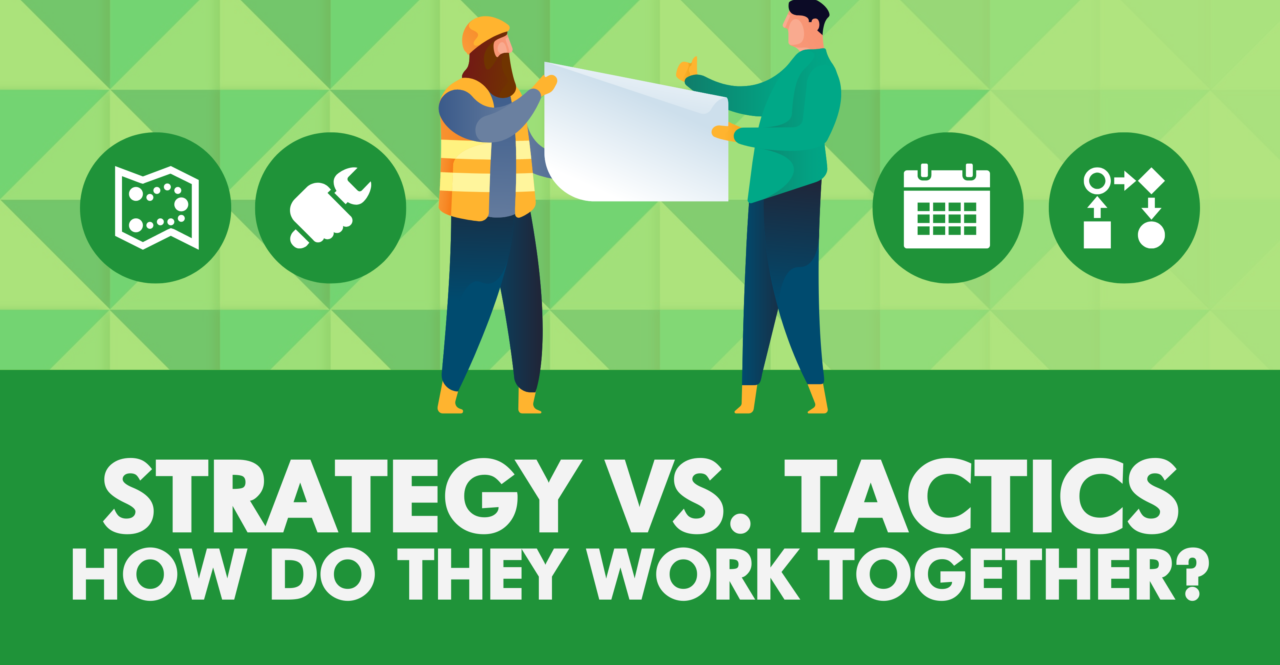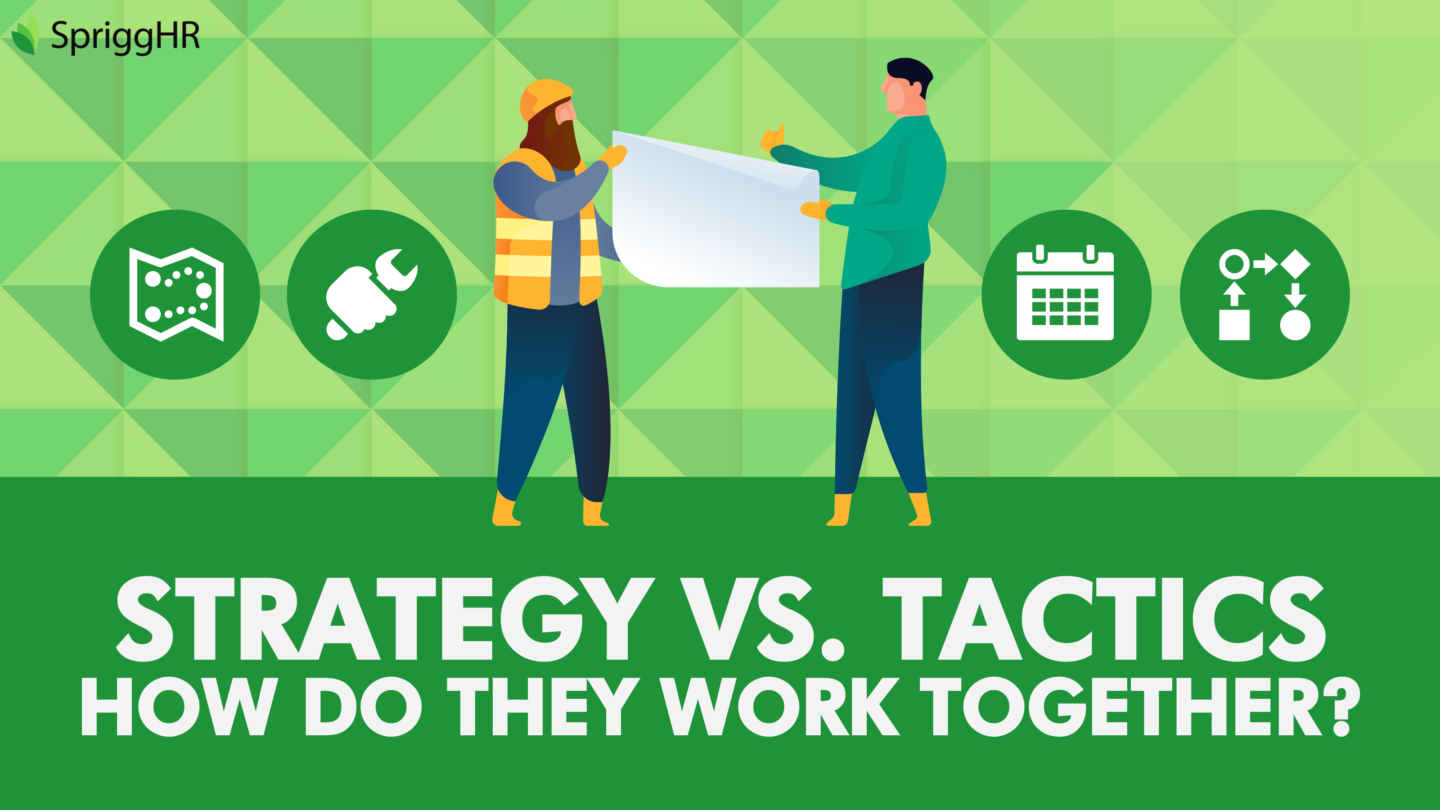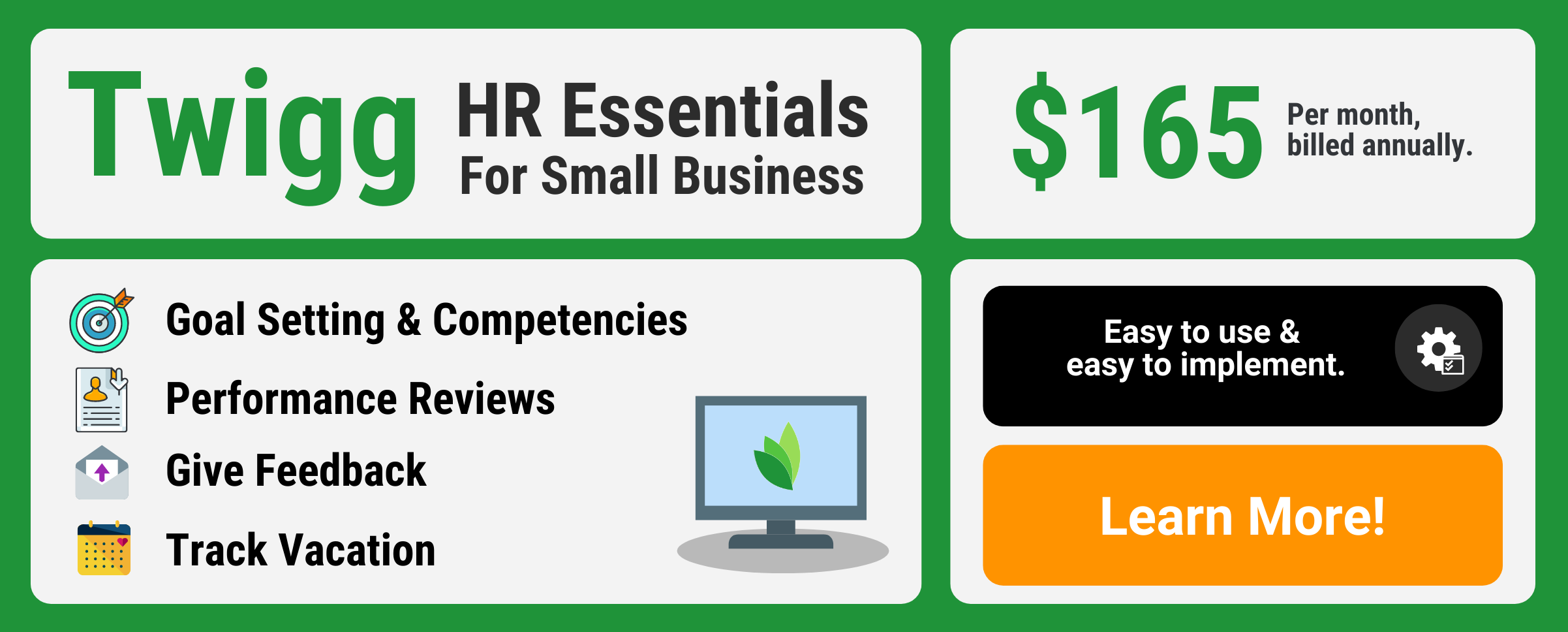
Strategy vs. Tactics: How Do They Work Together?
Strategy and tactics are two common enough business terms. But, what exactly do they mean? What is the difference between strategy vs. tactics, and why is that difference so important? Understanding the contrast between the two is more important than many people think, and so too is recognizing the most effective ways to use each.
Strategy vs. Tactics
There are several key distinctions between strategy and tactics, but the central difference can be drawn out by thinking of strategy of the destination and how you are going to get there, and tactics as the specific actions you are going to take along the way.
Strategy and Tactics Defined
Strategy and tactics originated as military terminology about 2,500 years ago, when Chinese military strategist Sun Tzu wrote in The Art of War, “strategy without tactics is the slowest route to victory. tactics without strategy is the noise before the defeat.” Examining this from a metaphorical standpoint, the distinction becomes clear. Strategy is the overarching plan or set of goals you are hoping to achieve, and changing them is a slow, arduous, but still possible process. Tactics are the specific actions or steps you undertake to accomplish that strategy.
When comparing strategy vs. tactics, it is important to note that they are not, and never have been, at odds with one another – rather, they’re on the same team. The strategic and the tactical can be defined as follows:
- Strategy defines your long-term goals, and how you’re planning on achieving them. The strategy gives you the path you need toward achieving your company’s mission.
- Tactics are concrete, and oriented toward smaller steps and a shorter time frame along the way. For your organization, tactics involve the best practices, specific plans, resources, and all other initiatives you use along the path towards achieving the organizational mission.
The Relationship Between Strategy vs. Tactics
Any time an organization decides on a goal, and invests in the resources needed to achieve it, it can be considered strategizing. Consider the example of war. Strategy in that sense is not about the moving of armies over geography. Rather, it encompasses the overall struggle of adversarial forces. In order to articulate a good strategy, you should be precise in your goal while still encompassing the entirety of what you are hoping to achieve. It is not about immediate success, but rather success in the long-term.
The central idea of strategy is the application of strength against the most promising opportunity. A strong strategy does not draw exclusively from existing strength, it also works to create strength. This is where tactics come into play. The definition of strategy as creating strength helps illustrate just how interconnected strategy and tactics truly are. As you execute your strategy, you choose specific tactics that reinforce and build strength and traction toward the strategic intent as they are deployed. Robert Greene stated in “The 33 Strategies of War” that “Strategy is the art of looking beyond the present… and calculating ahead. Focus on your goal and plot to reach it.” Along the way, the fuel that propels your company towards its goal will need to be replenished with carefully selected tactics, helping you stay on track towards your ultimate strategic goal.
Overall, a good rule of thumb for understanding the distinction between strategy and tactics is, “think strategically, act tactically.” Some examples of how strategy and tactics interact can help illustrate that distinction:
1. A strategy is based on extensive research, planning, and internal reflection.
Strategy is a long-term vision, setting it apart from tactics, which are short term actions. For example, your marketing strategy may be to improve your influence and performance on social media, so your tactics might be to determine the best social media channels for your company and the most effective messages to communicate to your audiences.
Keep in mind that it is much easier to adjust tactics to course-correct your plan of action than it is to completely overhaul your strategy. Tactics can and do have an influence on the success of your strategy, so if adjustments need to be made, do so with those rather than your strategic plan overall.
2. Strategy and tactics work together to an end.
A strategy without tactics won’t ever be executed or help you achieve your goals, just as tactics without a strategy won’t ever propel your business in the desirable direction. For example, your strategy may be to climb a mountain, and a key component of that strategy is to decide which side of the mountain you should climb. The tactics are the gear you’d buy, who you’d bring with you, your complete trip itinerary, the travel time, what season you’d go in, how long your trip would be, and so on. Simply put, one cannot exist without the other.
3. Strategy and tactics must always align with one another.
You may find a project or practice (i.e. a tactic) desirable or interesting, but it is only worth pursuing if it aligns with your long-term strategy. Your strategy should inform you on which tactics your company will execute or invest in, keeping your progress on track.
4. Even the best strategy and tactics won’t cover everything.
However ambitious your aspirations, resources will always be finite. Choosing the right strategy and corresponding tactics ensures your efforts are directed toward achieving your vision, but only in the most efficient manner possible. No process is immune to hiccups along the way.
Strategy vs. Tactics in Action
Before you can make any progress towards your strategic goals, you first need to have a solid set of objectives in mind. In order for your strategy to be most effective, and in order to develop that strong framework that will inform you on which tactics are most suitable for company progress, you need to have an outline of your goals and an intended audience already determined. Any goal you set should be S.M.A.R.T:
- Specific – can the detail in the information sufficiently identify problems or opportunities?
- Measurable – can a metric be created from a quantitative or qualitative attribute of the goal?
- Actionable – can the information achieved from the goal be used to improve performance, or another important aspect of business?
- Relevant – can the information achieved be applied to the specific problem being faced by the company?
- Time–Related – can the information be viewed and referenced over time in order to identify trends?
In order to gain a thorough understanding of how strategy and tactics interact, let’s look at an example of what an organizational goal may be. Evidently, your company will have several goals running at the same time, and as such, your strategies should be structured in a way that differentiates your business from the competition.
Consider the goal of increasing sales revenue by 25% by the end of the fiscal year. You have nailed down the overarching organizational goal, now it’s time to identify the objectives involved in that goal, measuring them against the S.M.A.R.T criteria. Let’s say the specific examples you draw from this goal are as follows:
- Increase brand awareness by 75% by fiscal year-end.
- Increase website traffic by 50% compared to the previous fiscal year.
Examples of the strategies and tactics you could use to address these objectives are outlined below:
| Objective | Example Strategy | Example Tactics |
| Increase brand awareness by 75% by fiscal year end. | Engage the target audience (TA) at key touch points in their day when they are the most receptive to brand messaging. |
|
| Increase website traffic by 50% compared with previous fiscal year. | Drive traffic from new unique visitors to your website. |
|
In Summary
Define and clearly communicate your strategy. Identify the critical steps required to execute and aim to pursue clear and achievable objectives. Measure the progress along the way and Don’t be afraid to pivot during implementation, unforeseen circumstances are common enough and you must be agile enough to respond. If you map your strategy and execute carefully, you will achieve what most organizations do not.






